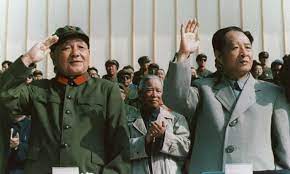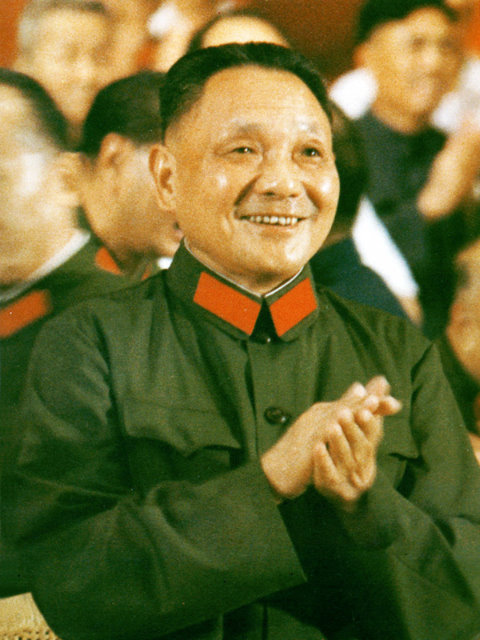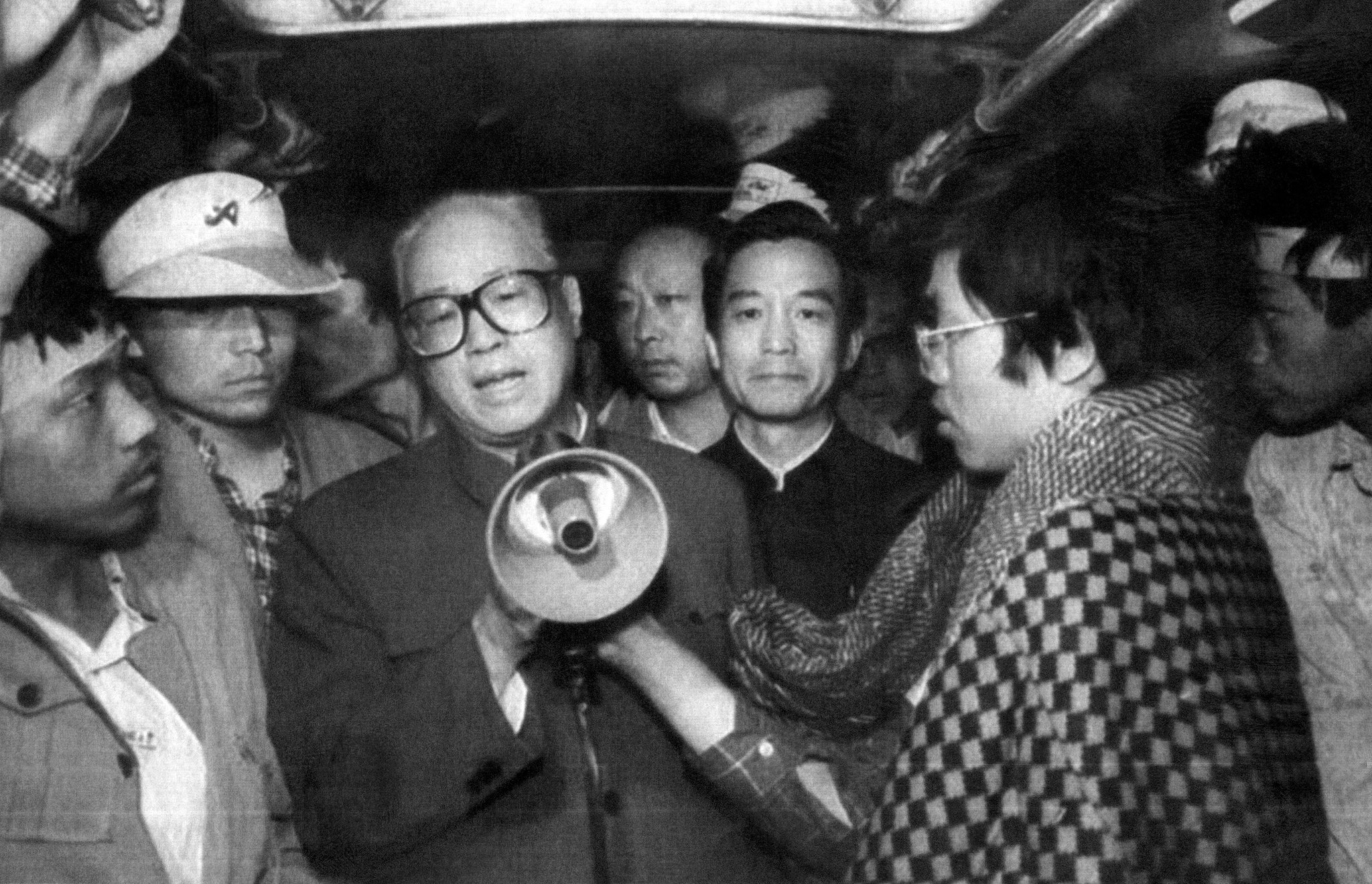Government Perspectives
Thesis - The Debate - The Massacre - Protester Perspectives - Government Perspectives - Tank Man -Lack of Diplomacy - China Today - Bibliogrpahy
Deng Xiaoping (left) and Hu Yaobang (right) waving to people. The Guardian, 2021.
The Chinese government felt threatened by the protesters. "In the 80s, free speech was actually pretty good, like in the United States, so people and students could talk, but they wanted more," stated Richie Li. When the protesters asked for more, they crossed the line. The government had to show the protesters who were in charge. In early June, that was the last straw for Deng Xiaoping. He ordered martial law on the protesters. After the incident, China's defense minister, General Wei Fenge, said the Chinese government had made the right decision to kill the protesters instead of negotiating or peacefully moving them. The Chinese did not see this event as much of a tragedy. While the government did not have much empathy for the protesters, China still tries to hide the incident today.


Deng Xiaoping, 邓小平, Alpha History, 1980
Deng Xiaoping, paramount leader of China and during Tiananmen (Dec. 1978 - Nov. 1989). He ordered the PLA to open fire in the Tianamen Massacre. Deng created the lack of diplomacy by making the law ordering the ban of assemblies, processions and demonstrations.
Hu Yaobang, Jeremiah Jenne, 1989.
Hu Yaobang was in the CPC. He was the one reformist in the CPC, and unexpectedly died due to a heart attack. He was pushing for more economic and political change. The protesters mourned his death, but they thought that the Chinese government didn't honor him enough. This is what originaly sparked the protests.
"A vaccination against future political turmoil."
- Unknown government official on the massacre
 Tank ManProtester Perspectives
Tank ManProtester PerspectivesZhao Ziyang, a CPC general secretary, urges the students to end the strike. NYTimes, 2021.